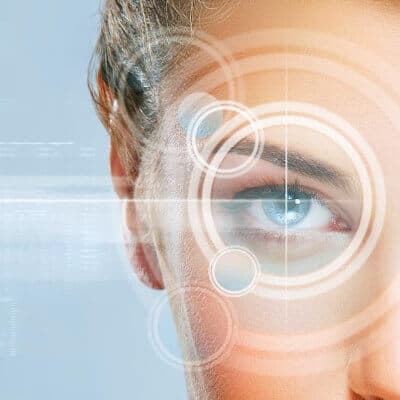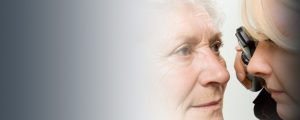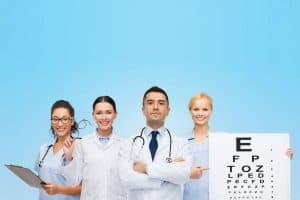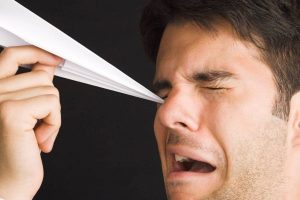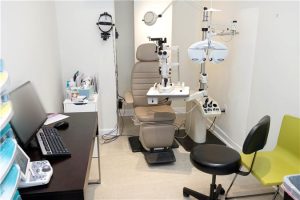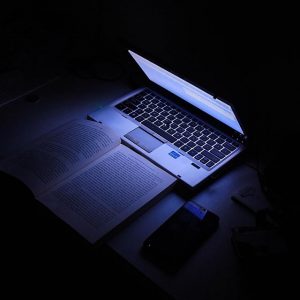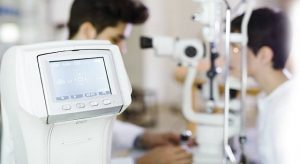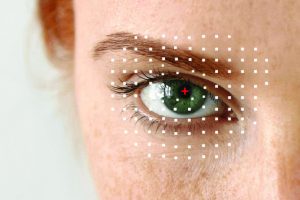Why are eye exams important?
A comprehensive eye exam includes a thorough examination of your ocular health and visual abilities.
Many factors contribute to the overall health of our eyes, and can cause changes that we may not even be aware of.
Many of the factors include the climate, medications, hormones, the natural aging process, and more. An annual eye exam can ensure that your vision and ocular health remain in optimal condition.
Moreover, a comprehensive eye exam can serve to detect other possible health conditions that you may be unaware of. For instance, your doctor will evaluate the health of the blood vessels in your retina.
This examination will not only provide information about the blood vessels in your eyes, it will also predict the health of the blood vessels throughout your body, and help to detect conditions such as diabetes, hypertension and high cholesterol.
Annual eye exams are especially important for anyone with diabetes, or those at risk for the disease, since an eye exam can detect early signs of diabetic retinopathy— the leading cause of blindness among adults.
What should you bring to an eye exam?
- Your eyeglasses and sunglasses
- Paper-based prescription of glasses and contact lenses
- Name of contact lens solution you use
- Eye drops you use on a regular basis
- A list of your current medications
- A list of allergies you may have
- Your family and medical history
What to expect during an eye exam
1. Vision tests
After discussing your medical history, your eye doctor will perform a series of tests to evaluate different aspects of your vision.
A visual acuity test measures the sharpness of your vision for both near and distance, through the identification of letters on an eye chart.
The refraction test helps to determine the type of prescription you may need by assessing your level of hyperopia (farsightedness), myopia (nearsightedness), astigmatism (blurriness), and presbyopia (near focusing).
During the refraction test, you will be asked to look through a special device called a phoropter while focusing on an eye chart about 10-20 feet away. Your eye doctor will then place different lenses in front of your eyes to see which one provides the clearest vision.
A retinoscopy provides an approximation of your eyeglass prescription. During this test, you will focus on a target, typically the “E” on the eye chart, as your eye doctor shines a light at your eye, while looking through a number of lenses. Based on the way the light reflects from your eye, your eye doctor can estimate the lens power that will work best to correct your vision.
A color vision test checks the color vision for any signs of color blindness, as well as any ocular health problems that may affect your color vision.
A cover test evaluates eye alignment at far and near distances, and rules out problems such as strabismus (eye misalignment) or amblyopia (lazy eye).
An ocular motility test assesses the accuracy of your eye movements which are essential for reading, sports vision and other skills.
A stereopsis test measures depth perception and lazy eyes through the use of 3D glasses.
Schedule an appointment with an eye doctor near who can detect any health or eye conditions you may have.
SEE RELATED: The Importance of Pupil Exams
2. Tests for ocular health
A comprehensive eye exam is not complete without an examination of the eye structures themselves— the eyelids, cornea, conjunctiva, iris, lens, retina, and optic nerve.
A slit lamp, or binocular microscope, provides high magnification for a thorough examination of the ocular structures— to facilitate identification of any eye conditions or diseases.
A glaucoma test measures the pressure inside your eyes using a machine called a tonometer that disperses a puff of air toward your eye. Based on your eye’s resistance to the air, the machine will calculate your intraocular pressure (IOP).
If you have high eye pressure, you may have, or be at risk for glaucoma. The second part of this test involves placing yellow numbing drops into your eyes so that your doctor can gently touch the surface of your eye with the tonometer to obtain another measure of your IOP.
The glaucoma test is important because there are typically no warning signs of glaucoma until there significant vision loss occurs. Therefore, ruling out early signs of glaucoma is essential to protect your eyesight.
A visual field test may be performed to detect the presence of scotomas, or blind spots in your peripheral vision. These types of blind spots can be caused by eye diseases such as glaucoma.
Your eye doctor may recommend further testing to rule out any ocular problems, or for early detection of an ocular disease.
These tests may include:
- Optical coherence tomography (OCT)
- Corneal topography (CT)
- Digital retinal imaging (DRI)
- Fluorescein angiography (FA)
Pupil dilation
Dilating drops are used to temporarily enlarge your pupils, allowing for a better view of the eye’s internal structures. The dilating drops usually take 20-30 minutes to begin working and the effects will typically last up to several hours, depending on the strength of the drop used. During this time, your eyes will be sensitive to light and you may have difficulty focusing on near objects.
When your eye exam is complete, it is recommended to wear sunglasses to minimize glare and light sensitivity.
How often do I need an eye exam?
Adults who are generally healthy and are not experiencing any vision problems should have an eye exam every few years. Based on your individual needs, your eye doctor will advise when to schedule your next eye exam.
If you don’t have any vision problems, the following timetable is a recommended guideline:
- Ages 20 to 40: every 2 to 3 years
- Ages 40 to 54: every 2 years
- Ages 55 to 65+: every 1 to 2 years
Increase the frequency of eye exams if you:
- Wear glasses or contact lenses
- Have a family history of eye disease or vision loss
- Have any eye condition, such as cataract, glaucoma or macular degeneration
- Have a chronic disease that increases your risk of eye disease, such as diabetes
- Take medications with side effects that can affect your eyes
Schedule an eye exam if you haven’t visited an eye doctor recently.
Why do I need an eye exam when I turn 40?
Eye doctors recommend having a comprehensive eye exam at age 40 because this is the age when early signs of ocular disease, such as glaucoma, cataracts, and diabetic retinopathy, may appear. Early detection of ocular disease enables earlier treatment, and reduces your chances of vision loss.
Eye exams can also enable early detection of diseases that affect the eyes, like diabetes and hypertension.
Seniors and eye exams
If you are 65 years or older, it is recommended to have your eyes checked at least every year or two to rule out signs of age-related eye diseases, such as:
- Cataracts
- Diabetic retinopathy
- Glaucoma
- Macular degeneration
How long will the exam take?
No two patients are alike. While many comprehensive eye exams can take up to an hour, the duration of the exam will be determined by your eye doctor, and the specific number and complexity of the tests required to assess your ocular health and vision.
Frequent eye exams are vitally important to protect your ocular health, vision and quality of life. Your eye doctor will determine how often you need to have your eye exams.
Is iridology the same as a comprehensive eye exam?
No.
Iridology is the study of the color patterns on the iris, the colored part of your eye. Is it used to uncover clues about a person’s general health status, as well as the functioning of various organ systems.
Iridology does not involve a thorough examination of the eyes and all of its inner structures, and therefore cannot detect changes in your eye health or vision.
LEARN MORE: Guide to Eye Exams
Schedule an appointment with an eye doctor near you for a comprehensive eye exam.

